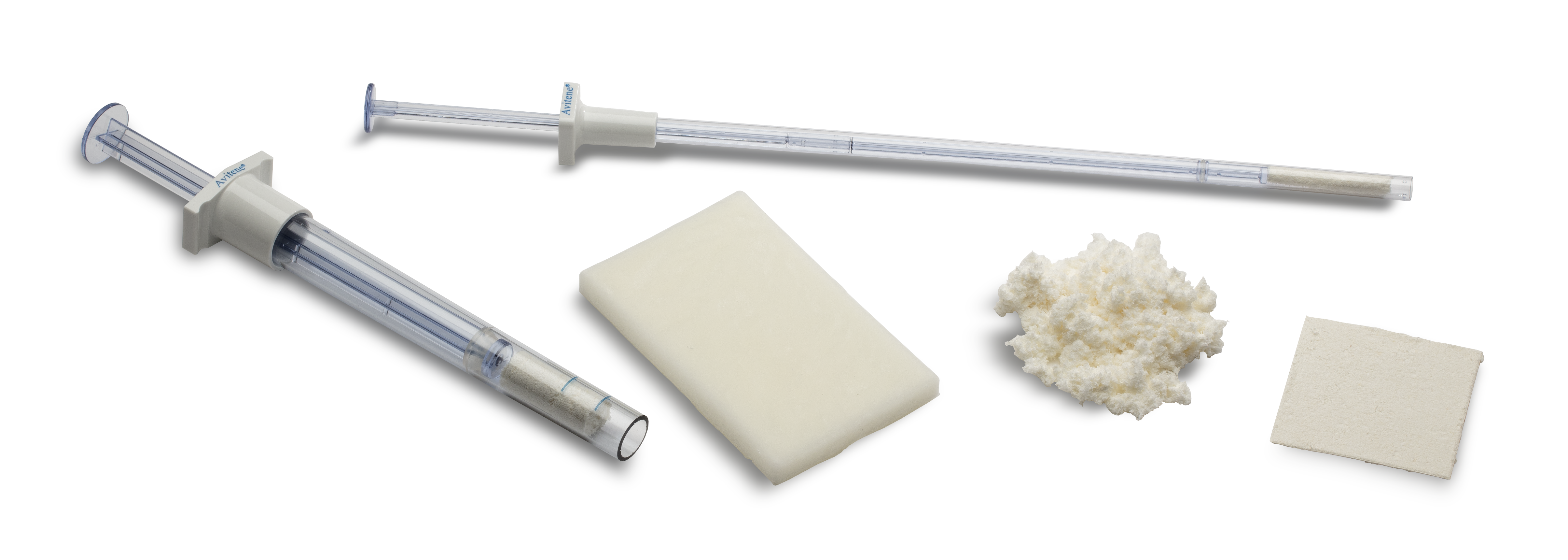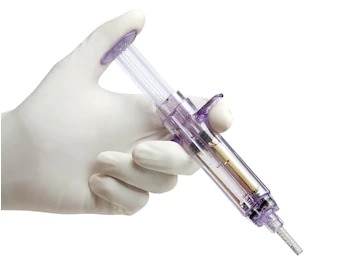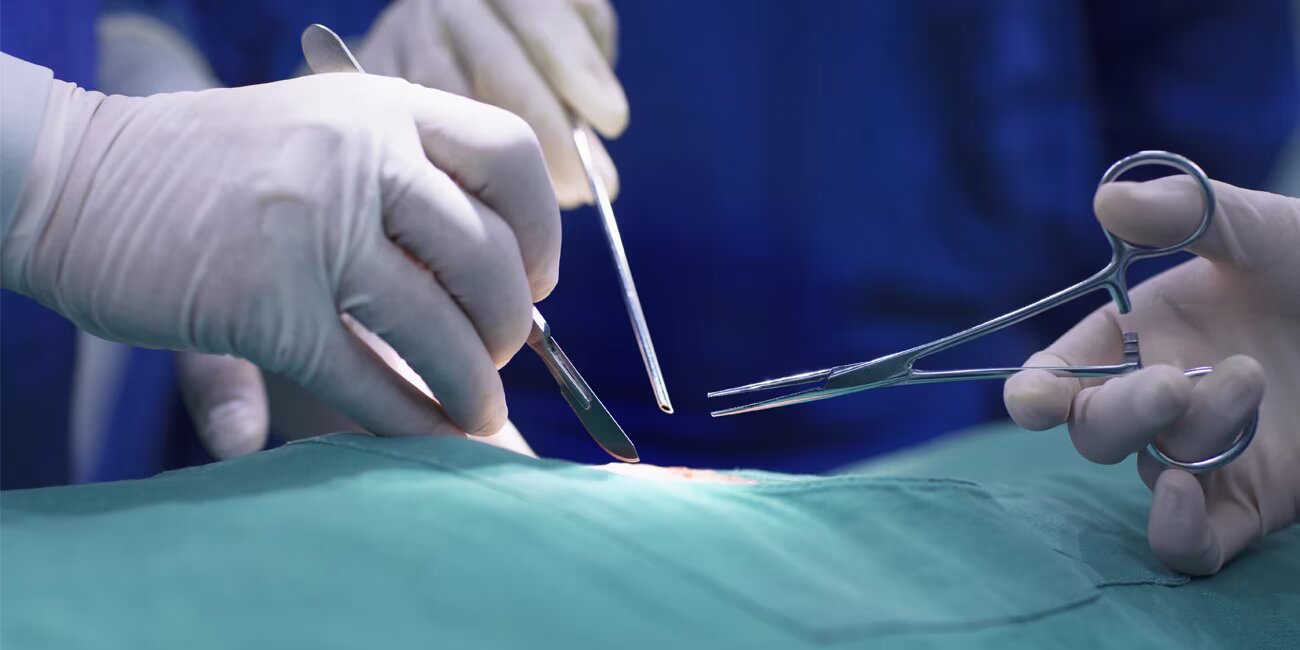
- Overview
- Products & Accessories
Overview of Surgical Bleeding
How is Bleeding Controlled During Surgery?
During surgery, surgeons employ hemostatic strategies, strategies to stop the flow of bleeding, such as using topical agents, tourniquets, or drains alongside pharmaceutical agents to control bleeding. In more severe cases, blood transfusions can also help in managing bleeding.
Where Can Bleeding Occur During Surgery?
Bleeding can occur at the incision site or within other tissues in the body. While bleeding can occur during surgery, it can also arise as a potential complication post-surgery.
What Causes Bleeding During Surgery?
Surgical bleeding is traditionally caused by surgical procedures themselves, structural defects, hyperfibrinolysis, or some other disruption of the body's hemostasis, such as blood clotting.
What are the Risk Factors for Surgical Bleeding?
Factors that increase the risk of bleeding include a history of spontaneous bruising, requiring blood transfusions in the past, and patient medication.
How Do I Stop Bleeding During Surgery?
There are many methods that can be employed by surgeons to stop/control bleeding. For example, bleeding during surgery can be stopped/controlled through hemostatic strategies such as utilizing hemostatic agents or sealants to mechanically stop the bleeding. Additionally, bleeding can be reduced by withdrawing anticoagulants and using pharmaceutical agents.
BD Surgical Sealant Overview
Progel™ Pleural Air Leak Sealant
What is Progel™ Pleural Air Leak Sealant?
Progel™ Pleural Air Leak Sealant is the only sealant FDA approved and clinically proven to seal air leaks in both open and minimally invasive thoracic surgery. Progel is designed for both strength and flexibility and works by forming strong bonds with the lung tissue and can expand as needed for respiration and bleeding control.
Elastic Strength
- Progel™ PALS forms a flexible hydrogel that gels at the tissue site, binding directly to the lung to form an airtight seal that works with the lung during respiration.
- Progel™ PALS can withstand the re-expansion of the lung within 2 minutes of application.
Easy To Use
- Progel™ PALS comes equipped with a spray tip that allows for customized application from a single, minimally invasive, and simple device.
Clinically Proven
- Progel™ PALS is the only clinical sealant with FDA approval to effectively treat air leak complications in both open and minimally invasive thoracic surgery.
- Progel™ PALS helped seal 96% of air leaks in the OR during a clinical trial of patients undergoing Video-Assisted or Robotic-Assisted lung resection.
Preventing Complications
- Identifying and treating air leaks intraoperatively with sealants such as Progel™ PALS helps to prevent persistent air leak complications and can provide incidental cost-of-care savings.
Tridyne™ Vascular Sealant
What is Tridyne™ Vascular Sealant?
Tridyne™ Vascular Sealant offers a unique and simple application solution that helps to control bleeding during thoracic aortic surgery. Made from the formulation of polyethylene glycol and human serum albumin, Tridyne™ Vascular Sealant forms a strong, flexible seal on both tissue and grafts, even in anticoagulated patients to control bleeding.
Simple and Efficient Application
- Tridyne™ Vascular Sealant is composed of a formula that discourages clumping during coverage. In addition, the sealant also comes with an applicator designed to provide easy transitioning from target application to address bleeding.
Large and Clear Coverage Area
- Tridyne™ Vascular Sealant provides both a strong coverage area and is clear. This clear hydrogel allows for direct visual confirmation of hemostasis, allowing surgeons complete visibility at the anastomotic suture line.
Proven Performance in Studies
- Tridyne™ Vascular Sealant has proven performance in clinical studies. It outperformed a competitor in several critical measures when used for thoracic aortic surgery in a randomized study of 156 patients.
BD Surgical Hemostat Overview
What is Arista™ AH?
Arista™ AH is a 100% plant-based absorbable hemostatic powder derived from purified plant starch. Arista™ AH is developed with microporous polysaccharide hemospheres, a patented blood clotting technology that helps control bleeding in a matter of minutes.
Simple & Efficient
- Arista™does not require mixing nor refrigeration.
- Arista™ provides broad area coverage on tricky surfaces and in hard-to-reach areas.
Thrombin-Free
- Arista™ is 100% plant-based, making it thrombin-free, biocompatible and non-pyrogenic.
Fast-Acting
- The clotting process begins on contact, regardless of a patient’s coagulation status.
- Typically absorbed in 24-48 hours* by amylases.
What is Avitene™ Microfibrillar Collagen Hemostat?
Avitene™ Microfibrillar Collagen Hemostat is an active absorbable collagen hemostat that serves to accelerate clot formation. Avitene™ MCH effectively enhances platelet aggregation and the release of proteins from the blood to form fibrin, which plays a role in bleeding control and hemostasis.
100% Collagen
- Every product in the Avitene™ MCH family of hemostats is made from 100% collagen, which is proven to accelerate clot formation to control bleeding.
Thrombin-Free and Patient Savings
- Reduced dependence on thrombin may contribute to better health economics and reduced costs for patients.
Versatile Application
- Acceptable for use in all procedures where a topical hemostat is indicated, including neurosurgery. Avitene™ MCH comes in three formats that provide versatile options to fit your specific procedure.
Trusted For Over 40 Years in 50 Countries
- Avitene™ MCH has been trusted by surgeons across the globe for over 40 years.
BD-111350
-

The BD Ambulatory Surgery Center Portfolio of Category-leading products, innovative solutions and dedicated support is designed to help ASCs improve clinical effiency and enhance paitent care.
-

BD hemostats come in various forms that all help accelarate natural clot formation in many surgical applications. They facilitate use with features such as preloaded applicators and ready-to-use designs.
-

-

1. Allen, Mark S. et al, “Prospective Randomized Study Evaluating a Biodegradable Polymeric Sealant for Sealing Intraoperative Air Leaks That Occur During Pulmonary Resection” Annals of Thoracic Surgery 2004; 77:1792-1801. Pivotal study. Data on file.
2. Progel™ Pleural Air Leak Sealant Instructions for Use. M-00443. Davol Inc. Data on file.
3. Davol Inc. In Vitro Bench Testing. Data on File. In vitro test results may not correlate to clinical performance.
4. Brunelli et al. Predictors of prolonged air leak after pulmonary lobectomy. Ann Thorac Surg 2004; 77: 1205-1210. Based on the reported incidence of prolonged postoperative air leak.
5. Okereke, I, Murthy, SC, Alster, JM, Blackstone, EH, Rice, TW. Characterization and Importance of Air Leak After Lobectomy. Ann Thorac Surg 2005;79:1167-1173.
6. Estimated based on 4Q 2014 sales data and an estimate of 1.2 mL kits per procedure.
7. Prospective evaluation of biodegradable polymeric sealant for intraoperative air leaks Bernard J. Park1 *, John M. Snider2, Nathan R. Bates3, Stephen D. Cassivi4, G. Kimble Jett5, Joshua R. Sonett6 and Eric M. Toloza7
Intended Use / Indications For Use
Progel™ Pleural Air Leak Sealant is a single use device intended for application to visceral pleura after standard visceral pleural closure with, for example, sutures or staples, of visible air leaks incurred during resection of lung parenchyma.
Contraindications
Do not use Progel™ PALS in patients who have a history of an allergic reaction to HSA or other device components. Do not use Progel™ PALS in patients who may have insufficient renal capacity for clearance of the Progel™ PALS PEG load. Do not apply Progel™ PALS on open or closed defects of main stem or lobar bronchi due to a possible increase in the incidence of bronchopleural fistulae, including patients undergoing pneumonectomy, any sleeve resection or bronchoplasty.
Warnings
Do not apply Progel™ PALS on oxidized regenerated cellulose, absorbable gelatin sponges or any other surface other than visceral pleura as adherence and intended outcome may be compromised.
Precautions
In the Post-approval study, the rate of post-operative pneumothorax was observed to be higher in patients treated with Progel™ PALS compared to control (standard-of-care), and the average duration of post-operative air leaks was not decreased when Progel™ PALS was used. In the post-approval study, the rate of post-operative pneumothorax was observed to be higher in patients treated with Progel™ PALS compared to control (standard-of-care), and 44% of Progel™ PALS subjects’ air leaks occurred when standard-of-care management techniques were not used. Progel™ is intended to be used only as an adjunct to standard of care management of intra-operative pleural air leaks. The safety and effectiveness of Progel™ PALS has not been established in the following: Patients less than 18 years of age; pregnant or nursing women; as a stand-alone therapy for intra-operative air leaks; contaminated or dirty pulmonary resection cases; the presence of an active infection; the presence of other sealants, hemostatic devices or products other than sutures and staples used in standard visceral pleural closure; visceral pleural air leak due to spontaneous pneumothorax, any non-resective pulmonary tissue trauma or malignancy, as well as congenital or acquired functional or anatomic defect; patients receiving Progel™ PALS in more than one application session (surgery) before and/or after resorption of Progel™ PALS that was applied in any previous surgical session; any area or tissue other than the visceral pleural surface as indicated; patients with forced expiratory volume in one second (FEV1) ≤ 40%, due to the small sample size of patients meeting this criteria in the original pivotal study. All five Progel™ PALS and four control patients with FEV1 ≤ 40% had postoperative air leak in the original pivotal study, whereas in patients with FEV1 > 40%, 59/93 Progel™ PALS patients (63.4%) and 45/53 control patients (84.9%) had postoperative air leak. See Section 7.9 Effectiveness: Primary Effectiveness Outcome in the Instructions for Use.
Adverse Events
There were 3 subjects in the Progel™ PALS group with AEs that were considered by the investigator to be possibly or probably related to the device. The AEs reported were: chest pain, constipation, gastroesophageal reflux, nausea, cough, dyspnea, pneumothorax, and subcutaneous emphysema. All were reported as a single occurrence in the Progel™ PALS group. Two of the AEs, dyspnea and chest pain, were reported as “severe” and “serious,” respectively and occurred in the same subject. All others were reported as mild (25%) or moderate (18.8%). In a clinical trial there were reports of renal dysfunction, urinary system disorders and deaths within the study population. None of these have been confirmed to be associated with Progel™. In a subsequent minimally invasive clinical trial there were no device related adverse events or unanticipated adverse events. The majority of AEs reported in this study were mild or moderate in severity. The majority of SAEs were pulmonary and expected events as part of a lung resection surgery. Two patients died during the course of the study, one due to cardiac arrest and another due to multi-system organ failure; neither were device related or unanticipated. The details of these clinical trial adverse events can be reviewed in the IFU supplied with the product and also available at http://www.bd.com
Caution: Federal (USA) law restricts this device to sale by or on order of a licensed physician or properly licensed practitioner.
BD-111350